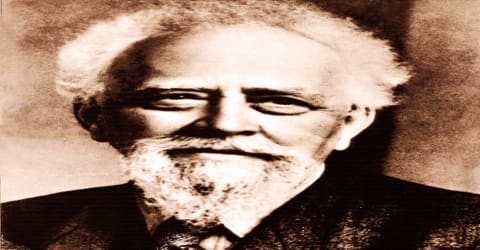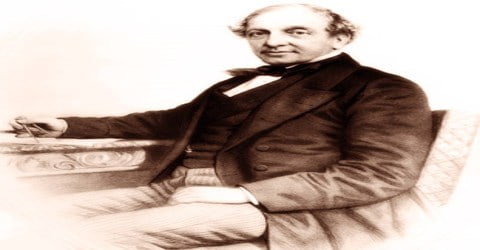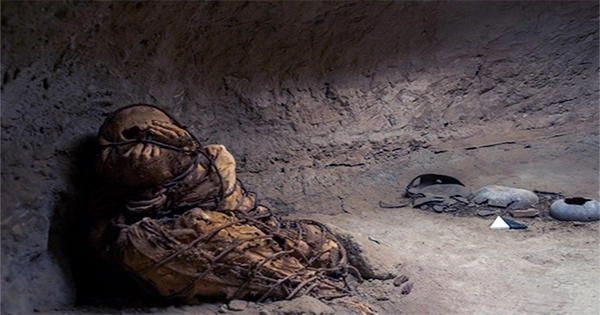Biography of Joan of Arc
Joan of Arc – A national heroine of France.
Name: Joan of Arc
Date of Birth: 6 January c. 1412
Place of Birth: Domrémy, Duchy of Bar, Kingdom of France
Date of Death: 30 May 1431 (aged approx. 19)
Place of Death: Rouen, Normandy (then under English rule)
Early Life
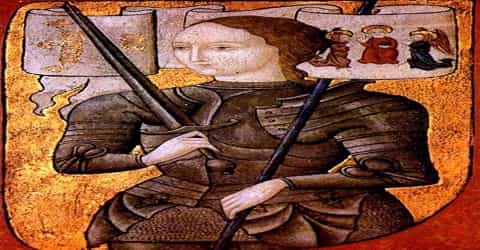
Saint Joan of Arc, national heroine of France, was born c. 1412 CE, Domrémy, Bar, France. She was born to Jacques d’Arc and Isabelle Romée, a peasant family, at Domrémy in north-east France. Joan claimed to have received visions of the Archangel Michael, Saint Margaret, and Saint Catherine of Alexandria instructing her to support Charles VII and recover France from English domination late in the Hundred Years’ War. The uncrowned King Charles VII sent Joan to the siege of Orléans as part of a relief mission. She gained prominence after the siege was lifted only nine days later. Several additional swift victories led to Charles VII’s coronation at Reims. This long-awaited event boosted French morale and paved the way for the final French victory.
The French national heroine Joan of Arc led a troop of French soldiers and served as a temporary focus of French resistance to English occupation in the last phase of the Hundred Years War (1339–1453), a war with England which caused severe hardship in France. Joan of Arc’s place in history was finally solidified in the twentieth century when she was declared a saint.
At the time of Joan of Arc’s birth, France was embroiled in a long-running war with England known as the Hundred Years’ War; the dispute began over who would be the heir to the French throne. By the early 15th century, northern France was a lawless frontier of marauding armies.
On 23 May 1430, she was captured at Compiègne by the Burgundian faction, a group of French nobles allied with the English. She was later handed over to the English and put on trial by the pro-English Bishop Pierre Cauchon on a variety of charges. After Cauchon declared her guilty she was burned at the stake on 30 May 1431, dying at about nineteen years of age.
She became the greatest national heroine of her compatriots, and her achievement was a decisive factor in the later awakening of French national consciousness.
In 1456, an inquisitorial court authorized by Pope Callixtus III examined the trial, debunked the charges against her, pronounced her innocent, and declared her a martyr. In the 16th century she became a symbol of the Catholic League, and in 1803 she was declared a national symbol of France by the decision of Napoleon Bonaparte. She was beatified in 1909 and canonized in 1920. Joan of Arc is one of the nine secondary patron saints of France, along with Saint-Denis, Saint Martin of Tours, Saint Louis, Saint Michael, Saint Rémi, Saint Petronilla, Saint Radegund and Saint Thérèse of Lisieux.
Childhood, Family and Educational Life

Saint Joan of Arc, byname the Maid of Orléans, French Sainte Jeanne d’Arc or La Pucelle d’Orléans, was born on January 6th around the year 1412 to Jacques d’Arc and his wife Isabelle in the little village of Domremy, within the Barrois region (now part of “Lorraine”) on the border of eastern France. Joan learned piety and domestic skills from her mother. Never venturing far from home, Joan took care of the animals and became quite skilled as a seamstress.
Joan was the daughter of a tenant farmer at Domrémy, on the borders of the duchies of Bar and Lorraine. In her mission of expelling the English and their Burgundian allies from the Valois kingdom of France, she felt herself to be guided by the voices of St. Michael, St. Catherine of Alexandria, and St. Margaret of Antioch.
Joan’s parents owned about 50 acres (20 hectares) of land and her father supplemented his farming work with a minor position as a village official, collecting taxes and heading the local watch. They lived in an isolated patch of eastern France that remained loyal to the French crown despite being surrounded by pro-Burgundian lands. Several local raids occurred during her childhood and on one occasion her village was burned. Joan was illiterate and it is believed that her letters were dictated by her to scribes and she signed her letters with the help of others.
Personal Life
Joan of Arc was endowed with remarkable mental and physical courage, as well as a robust common sense, and she possessed many attributes characteristic of the female visionaries who were a noted feature of her time. These qualities included extreme personal piety, a claim to direct communication with the saints, and a consequent reliance upon individual experience of God’s presence beyond the ministrations of the priesthood and the confines of the institutional church.
Career and Works
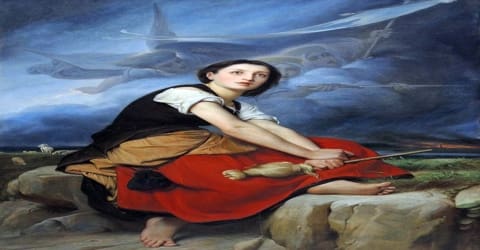
In 1392 the insanity of the French king, Charles VI (1368–1422), had begun the struggle between two factions (rival groups) to control the kingdom, the Burgundians and the Armagnacs. The leader of the Armagnacs, John the Fearless (1371–1419), Duke of Burgundy, finally assumed control, as both sides appealed for help to England. Henry V (1387–1422) of England invaded France in 1415 and delivered a shattering defeat upon the French. The English and Burgundians entered Paris in 1418, and the murder of John the Fearless in 1419 strengthened Burgundian hatred for the Armagnac faction.
In 1420 the queen of France, Isabeau of Bavaria, signed the Treaty of Troyes, which granted the succession of the French throne to Henry V and his heirs instead of her son Charles. This agreement revived suspicions that the Dauphin may have been the illegitimate product of Isabeau’s rumored affair with the late Duke of Orléans rather than the son of King Charles VI. Henry V and Charles VI died within two months of each other in 1422, leaving an infant, Henry VI of England, the nominal monarch of both kingdoms. Henry V’s brother, John of Lancaster, 1st Duke of Bedford, acted as regent.
Around this time, Joan of Arc began to have mystical visions encouraging her to lead a pious life. Over time, they became more vivid, with the presence of St. Michael and St. Catherine designating her as the savior of France and encouraging her to seek an audience with Charles who had assumed the title Dauphin (heir to the throne) and ask his permission to expel the English and install him as the rightful king.
Joan indicated that it was around 1424 when she was twelve that she began to experience visions which she described as both verbal communication as well as visible figures of saints and angels which she could see and touch. Her own testimony, as well as a Royal document, say that on at least two occasions specific other persons could see the same figures.
The apparent hopelessness of the Dauphin’s cause at the end of 1427 was increased by the fact that, five years after his father’s death, he still had not been crowned. Reims, the traditional place for the investiture of French kings, was well within the territory held by his enemies. As long as the Dauphin remained unconsecrated, the rightfulness of his claim to be king of France was open to challenge.
Joan identified these visions as St. Catherine of Alexandria, St. Margaret of Antioch, the Archangel Michael, occasionally Gabriel, and large groups of angels on some occasions. Various authors have speculated on the significance of these personages. The only one with a definite relevance to the military situation would be the Archangel Michael, who had been chosen in 1422 as one of the patron saints of the French Royal army (with Saint-Denis) and had long served as patron of the fortified island of Mont-Saint-Michel, which had withstood an ongoing siege or blockade since 1418 and would successfully resist continued English efforts until the truce of 1444 finally brought a respite.
In 1428 the English had begun the siege of Orléans, one of the few remaining cities still loyal to Charles VII and an important objective since it held a strategic position along the Loire River, which made it the last obstacle to an assault on the remainder of the French heartland. In the words of one modern historian, “On the fate of Orléans hung that of the entire kingdom.” No one was optimistic that the city could long withstand the siege. For generations, there had been prophecies in France which promised France would be saved by a virgin from the “borders of Lorraine” “who would work miracles” and “that France will be lost by a woman and shall thereafter be restored by a virgin”. The second prophecy predicating France would be “lost” by a woman was taken to refer to Isabeau’s role in signing the Treaty of Troyes.
At the age of 16, she asked a relative named Durand Lassois to take her to the nearby town of Vaucouleurs, where she petitioned the garrison commander, Robert de Baudricourt, for an armed escort to bring her to the French Royal Court at Chinon. Baudricourt’s sarcastic response did not deter her. She returned the following January and gained support from two of Baudricourt’s soldiers: Jean de Metz and Bertrand de Poulengy.
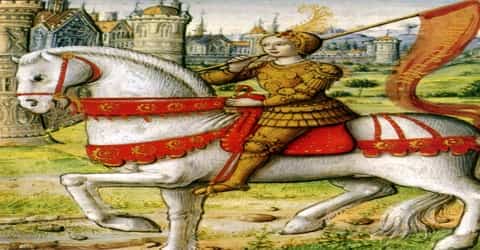
According to Jean de Metz, she told him that “I must be at the King’s side … there will be no help (for the kingdom) if not from me. Although I would rather have remained spinning at my mother’s side … yet must I go and must I do this thing, for my Lord wills that I do so.” Under the auspices of Metz and Poulengy, she was given a second meeting, where she made a prediction about a military reversal at the Battle of Rouvray near Orléans several days before messengers arrived to report it. According to the Journal du Siége d’Orléans, which portrays Joan as a miraculous figure, Joan came to know of the battle through “grace divine” while tending her flocks in Lorraine and used this divine revelation to persuade Baudricort to take her to the Dauphin.
In May 1428, Joan’s visions instructed her to go to Vaucouleurs and contact Robert de Baudricourt, the garrison commander and a supporter of Charles. At first, Baudricourt refused Joan’s request, but after seeing that she was gaining the approval of villagers, in 1429 he relented and gave her a horse and an escort of several soldiers. Joan cropped her hair and dressed in men’s clothes for her 11-day journey across enemy territory to Chinon, the site of Charles’s court.
Joan went at once to the castle of the Dauphin Charles, who was initially uncertain whether to receive her. His counselors gave him conflicting advice, but two days later he granted her an audience. As a test, Charles hid among his courtiers, but Joan quickly detected him; she told him that she wished to go to battle against the English and that she would have him crowned at Reims. On the Dauphin’s orders, she was interrogated by ecclesiastical authorities in the presence of Jean, Duc d’Alençon, a relative of Charles, who showed himself well-disposed toward her. She was then taken to Poitiers for three weeks, where she was further questioned by eminent theologians who were allied to the Dauphin’s cause.
Joan of Arc was once described: “This Maid … has a virile man-like bearing, speaks little, and shows admirable prudence carefulness in all her words. She has a pretty, woman’s voice, eats little, drinks very little wine; she enjoys riding a horse and takes pleasure in fine arms, greatly likes the company of noble fighting men, detests dislikes numerous assemblies and meetings, readily sheds copious many tears, has a cheerful face.…” Joan appears to have been robust, with dark brown hair, and, as one historian remarked, “in the excitement which raised her up from earth to heaven, she retained her solid common sense and a clear sense of reality.”
Joan told the ecclesiastics that it was not at Poitiers but at Orléans that she would give proof of her mission; and forthwith, on March 22, she dictated letters of defiance to the English. In their report, the churchmen suggested that in view of the desperate situation of Orléans, which had been under English siege for months, the Dauphin would be well-advised to make use of her.
From the spring of 1429 to the spring of 1430, Charles and his advisers were undecided on the course of the war. Joan favored taking the military offensive against English positions, particularly Paris. An attack upon Paris in September 1429 failed, and Charles VII entered into a treaty with Burgundy that committed him to virtual inaction.
A truce with England during the following few months left Joan with little to do. On 23 March 1430, she dictated a threatening letter to the Hussites, a dissident group which had broken with the Catholic Church on a number of doctrinal points and had defeated several previous crusades sent against them. Joan’s letter promises to “remove your madness and foul superstition, taking away either your heresy or your lives.” Joan, an ardent Catholic who hated all forms of heresy together with Islam also sent a letter challenging the English to leave France and go with her to Bohemia to fight the Hussites, an offer that went unanswered.

From September 1429 to the early months of 1430, Joan appears to have been kept inactive by the royal court, finally moving to the defense of the town of Compiègne in May 1430. During a small battle outside the town’s walls against the Burgundians, Joan was cut off and captured. She was a valuable prize. The Burgundians took her captive and held her for several months, negotiating with the English, who saw her as a valuable propaganda prize. Finally, the Burgundians exchanged Joan for 10,000 francs. Charles VII could do nothing.
Joan was imprisoned by the Burgundians at Beaurevoir Castle. She made several escape attempts, on one occasion jumping from her 70-foot (21 m) tower, landing on the soft earth of a dry moat, after which she was moved to the Burgundian town of Arras. The English negotiated with their Burgundian allies to transfer her to their custody, with Bishop Pierre Cauchon of Beauvais, an English partisan, assuming a prominent role in these negotiations and her later trial.
Between February 21 and March 24, 1431, she was interrogated nearly a dozen times by a tribunal, always keeping her humility and steadfast claim of innocence. Instead of being held in a church prison with nuns as guards, she was held in a military prison. Joan was threatened with rape and torture, though there is no record that either actually occurred. She protected herself by tying her soldiers’ clothes tightly together with dozens of cords. Frustrated they could not break her, the tribunal eventually used her military clothes against her, charging that she dressed like a man.
The trial record contains statements from Joan that the eyewitnesses later said astonished the court since she was an illiterate peasant and yet was able to evade the theological pitfalls the tribunal had set up to entrap her. The transcript’s most famous exchange is an exercise in subtlety: “Asked if she knew she was in God’s grace, she answered, ‘If I am not, may God put me there; and if I am, may God so keep me.'” The question is a scholarly trap. Church doctrine held that no one could be certain of being in God’s grace. If she had answered yes, then she would have been charged with heresy. If she had answered no, then she would have confessed her own guilt. The court notary Boisguillaume later testified that at the moment the court heard her reply, “Those who were interrogating her were stupefied.”
Joan’s answers throughout the trial reveal her presence of mind, humility, wit, and good sense. Apparently, Joan and her accusers differed about the nature of her abjuration, and two days after she signed it, she recanted or withdrew her previous belief.
Awards and Honor
Joan of Arc has remained a popular figure in literature, painting, sculpture, and other cultural works since the time of her death, and many famous writers, playwrights, filmmakers, artists, and composers have created, and continue to create, cultural depictions of her.
Death and Legacy
On May 29, 1431, the tribunal announced Joan of Arc was guilty of heresy. On the morning of May 30, she was taken to the marketplace in Rouen and burned at the stake, before an estimated crowd of 10,000 people. She was 19 nineteen years old. One legend surrounding the event tells of how her heart survived the fire unaffected. Her ashes were gathered and scattered in the Seine.
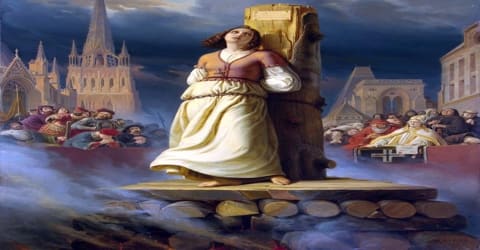
Eyewitnesses described the scene of the execution by burning on 30 May 1431. Tied to a tall pillar at the Vieux-Marché in Rouen, she asked two of the clergy, Fr Martin Ladvenu, and Fr Isambart de la Pierre, to hold a crucifix before her. An English soldier also constructed a small cross that she put in the front of her dress. After she died, the English raked back the coals to expose her charred body so that no one could claim she had escaped alive. They then burned the body twice more, to reduce it to ashes and prevent any collection of relics, and cast her remains into the Seine River. The executioner, Geoffroy Thérage, later stated that he “greatly feared to be damned”.
From 1450 to 1456 a reinvestigation of Joan’s trial and condemnation was undertaken by ecclesiastical lawyers. On July 7, 1456, the commission declared Joan’s trial null and void, thereby freeing Joan from the taint of heresy. The Joan of Arc legend, however, did not gather momentum until the seventeenth century. In spite of her legend, Joan was not canonized (declared a saint) until May 16, 1920.
Information Source:


